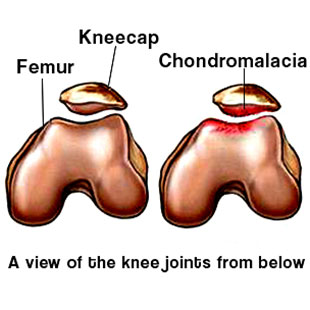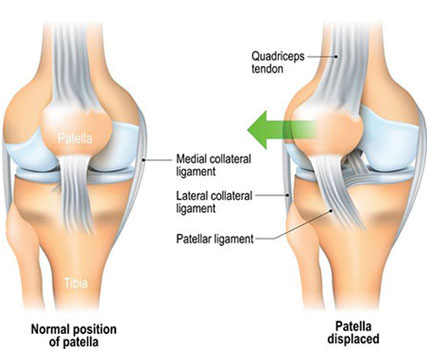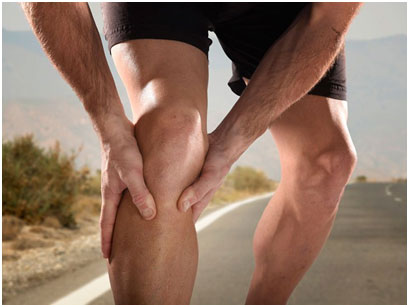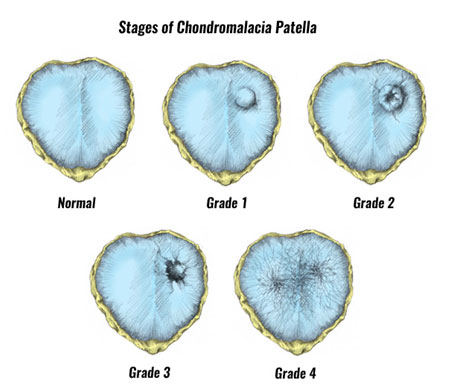Chondromalacia Patellae
Chondromalacia patellae also known as “runner’s knee”, is a condition where the cartilage on the undersurface of the patella deteriorates and softens. This condition is common among young, athletic individuals, but may also occur in older adults who have arthritis of the knee.
What cause chondromalacia patellae?
Improper kneecap movement may result from:
- Poor alignment due to a congenital condition
- Weak hamstring and quadriceps ( the muscles in the back and front of your thighs , respectively)
- Muscles imbalance between the adductors and abductor ( the muscles on the outside and inside of your thighs)
- Repeated stress to your knee joints, such as from running, skiing, or jumping
- A direct blow or trauma to your kneecap

Who is at risk for chondromalacia patellae?
Age:Adolescents and young are at high risk for this condition.
Sex:Females are more likely than males
Flat feet:Having flat feet may place more stress on the knee joints than having higher arches would.
Previous injury:A prior injury to the kneecap, such as a dislocation, can increase your risk of developing runner’s knee.
Having flat feet may place more stress on the knee joints than having higher arches would.
High activity level:Having flat feet may place more stress on the knee joints than having higher arches would.
Arthritis:inflammation can prevents the kneecap from functioning properly.

What are the symptoms & sign of chondromalacia patella?
The symptoms of chondromalacia patella are generally a vague discomfort of Inner front of the knee. Aggravated by activity (running, jumping, climbing, or descending stair) or by prolonged sitting with knees in a moderately bent position. some patients may also have a vague sense of “tightness “or “fullness “in the knee area. Occasionally, if chronic symptoms are ignored, the associated loss of quadriceps muscle strength may cause the leg to “give out “. Beside an obvious reduction in quadriceps muscle mass, mild swelling of the knee area may occur.

How is chondromalacia patella diagnosed?
Your doctor will look for areas of swelling or tenderness in your knee. They may also look at how your kneecap aligns with your thigh bone. A misalignment can be an indicator of chondromalacia patellae. Your doctor may also apply resistive pressure to your extended kneecap to determine the tenderness and severity.
Afterward, your doctor may request any of the following tests to aid in Diagnosis and Grading:
• X-rays to show bone damaged or signs of misalignment or arthritis
• MRI to view cartilage wear and tear
• Diagnostic arthroscopy, a minimally invasive procedure to visualize the inside of the knee that involves inserting an endoscope and camera into the knee joint.
• Grade 1 severity indicate softening of the cartilage in the knee area.
• Grade 2 indicate a softening of the cartilage along with abnormal surface characteristics. This usually marks the beginning of tissue erosion.
• Grade 3 shows thinning of cartilage with active deterioration of the tissue.
• Grade 4 the most severe grade, indicate exposure of the bone with a significant portion of cartilage deteriorated. Bone exposure means bone to bone rubbing is likely occurring in the knee.
• First- Aid care can reduce pain and swelling immediately after an injury to your knee. Rest, Ice, Compression, Elevation
• Physiotherapy is usually recommended in grade I and II sprains to treat non-surgically. It will help to improve strength and alignment in knees and kneecap, restore muscle strength, restore your range motion, provide pain relief
• Surgical treatment will be needed in case of severe or complete tear. Arthroscopic surgery: - It’s good to go for arthroscopy than open surgery, as it is a key hole surgery, with minimal cuts and stitches. It also promotes fast recovery post operatively. Physiotherapy will be strongly recommended post
• surgically for the best result.

Chondromalacia patellae also known as “runner’s knee”, is a condition where the cartilage on the undersurface of the patella deteriorates and softens. This condition is common among young, athletic individuals, but may also occur in older adults who have arthritis of the knee.
Who is at risk for chondromalacia patellae?
Age:
Adolescents and young are at high risk for this condition.
Sex:
Females are more likely than males
Flat feet:
Having flat feet may place more stress on the knee joints than having higher arches would.
Previous injury:
A prior injury to the kneecap, such as a dislocation, can increase your risk of developing runner’s knee.
Having flat feet may place more stress on the knee joints than having higher arches would.
High activity level:
Having flat feet may place more stress on the knee joints than having higher arches would.
Arthritis:
inflammation can prevents the kneecap from functioning properly.




